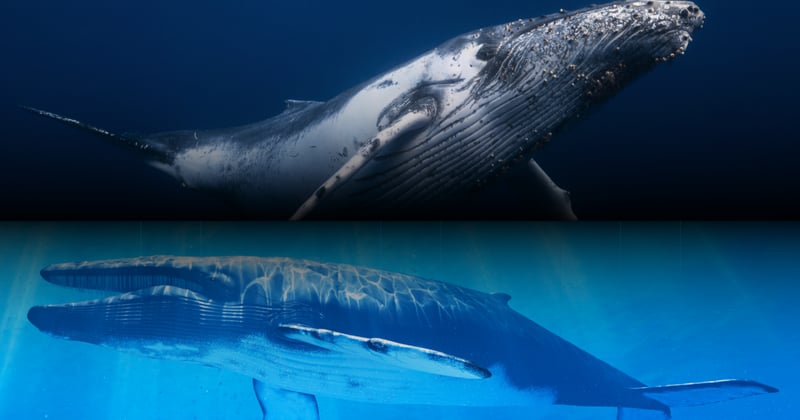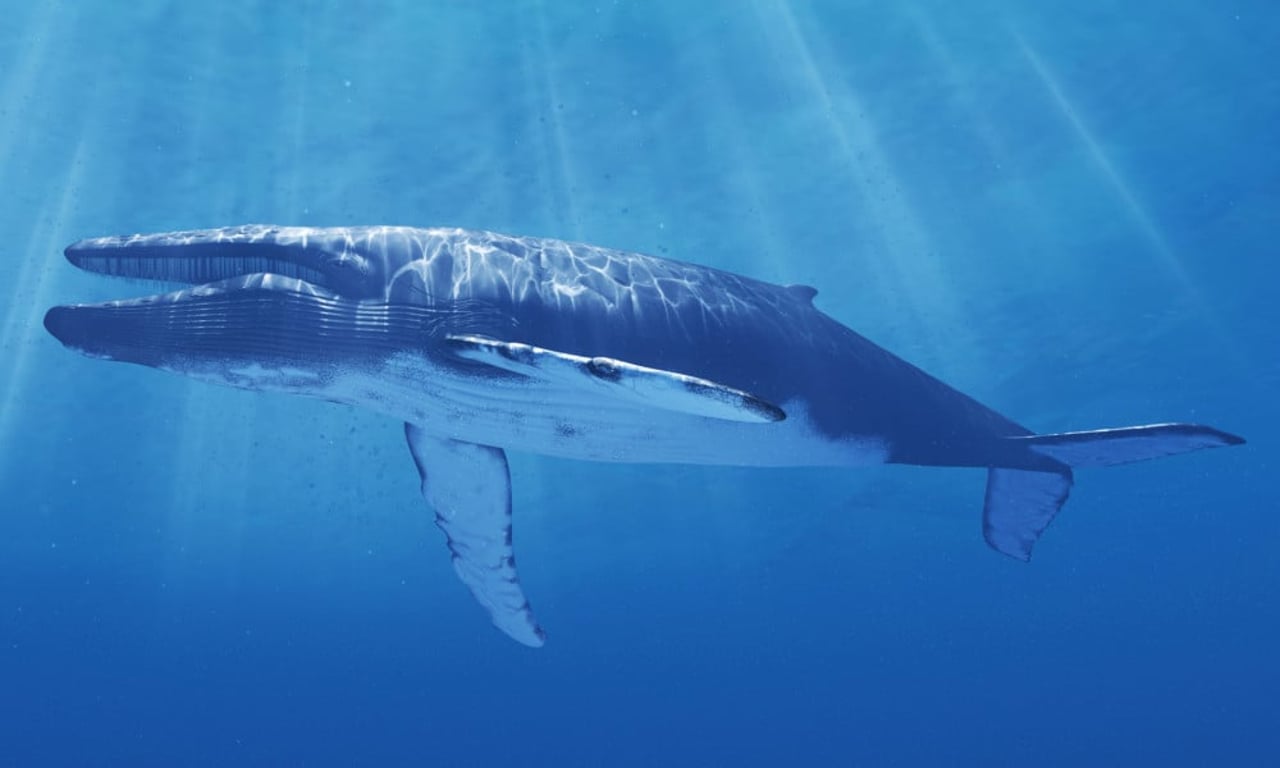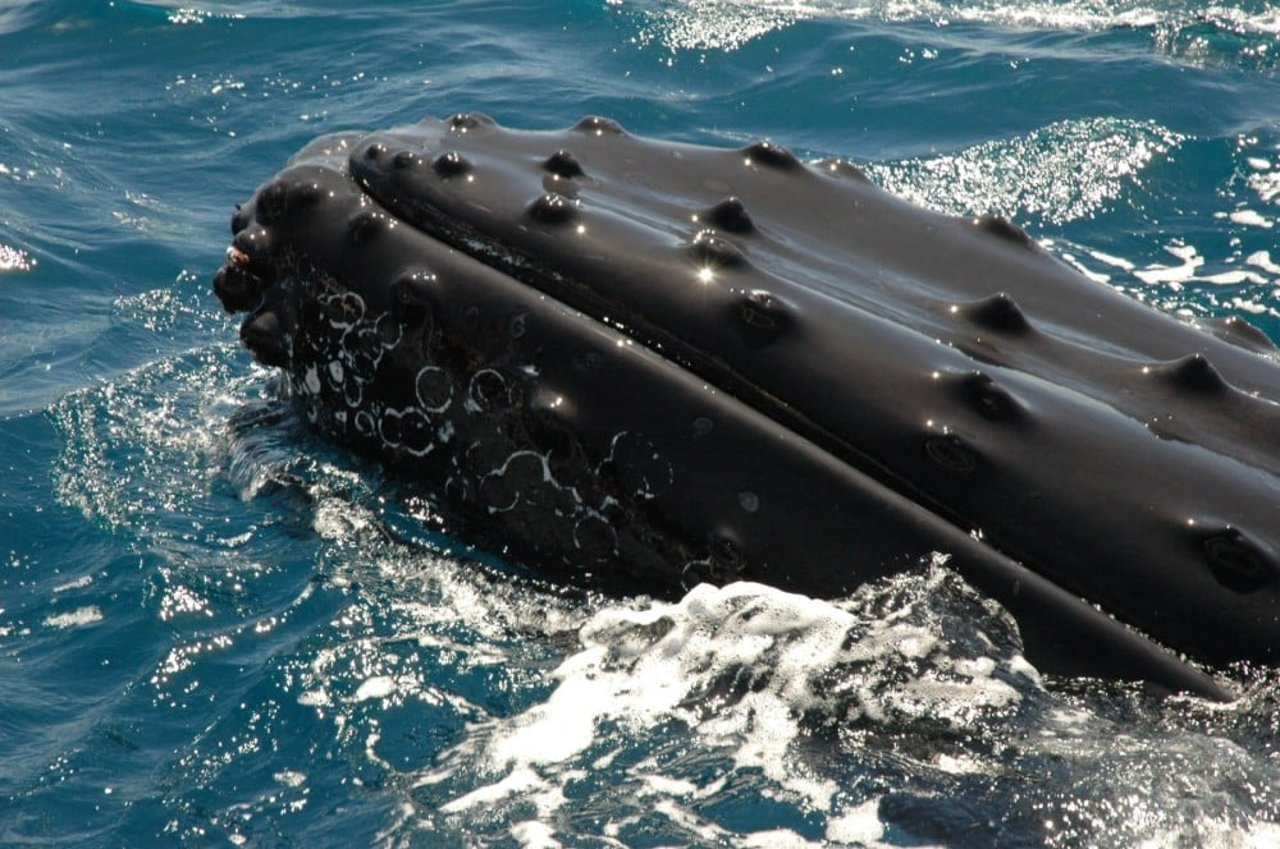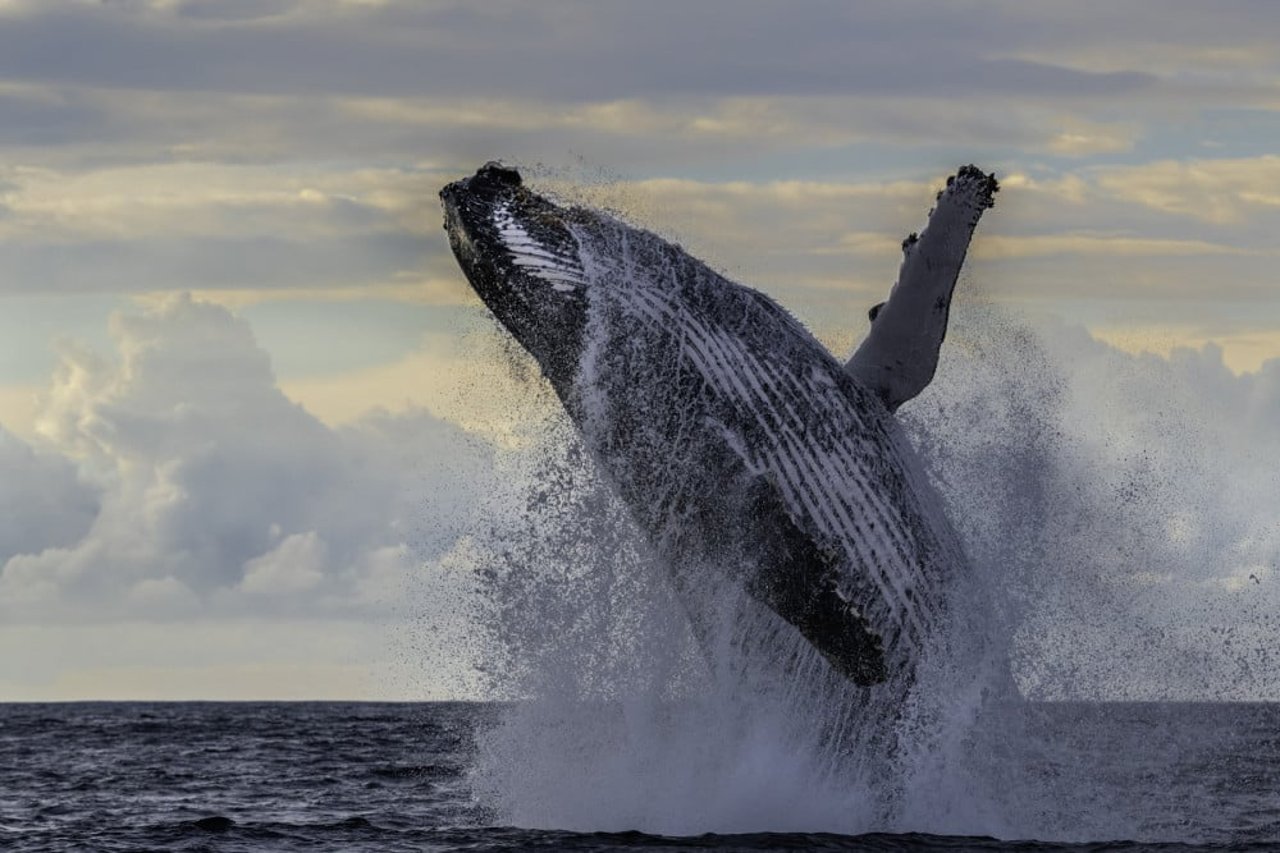
Learn about the largest and the most playful whales.
How do you tell the difference between a blue whale and a humpback whale? Which is the largest animal in the world? Which loves to jump out of the water, also known as breaching?
Let’s find out.
Some might find it tricky to differentiate between a blue whale and a humpback whale. They’re similar animals but have key differences and are separate species.
A blue whale.
Size
Blue whales are the largest animals in the world. They weigh around 200 tons (equal to the weight of 30 elephants!). They can also grow more than 100 feet long, which is equivalent to three school buses lined up.
Humpback whales are much smaller. They’re about half the size of a blue whale and weigh about a quarter as much.
Humpback whale tubercles on the underside of the mouth.
Appearance
Humpback whales are known for their long pectoral fins and tubercles (fist-sized bumps on their upper and lower jaws that contain hair follicles). They also have a small hump in front of their dorsal fin, which is where they get their name from.
Unlike the humpback whale, blue whales have long, slender bodies that are smooth. They have a triangular dorsal fin and, you guessed it, look blue underwater (but are technically a blue-grey color).
A humpback whale breaching.
Behavior
Humpback whales are popular for breaching, a behavior where they leap out of the water, exposing 90% of their bodies. No one really knows why whales breach, but some theories attribute it to communication, claiming territory, and removing parasites.
It’s rare to see a blue whale breach. Instead, they’re known for being the loudest animals in the world, using a series of low-frequency pulses, groans, and moans to communicate with others.
Where to see humpback and blue whales
Ready to see whales in real life? Check out our newly released Wildlife Heritage Areas program. In partnership with World Cetacean Alliance, the program recognizes global destinations that offer responsible wildlife-watching tourism. In the US, you can visit the Santa Barbara Whale Heritage Area, where you might see humpback and blue whales along with dolphins, porpoises, and other whale species.


